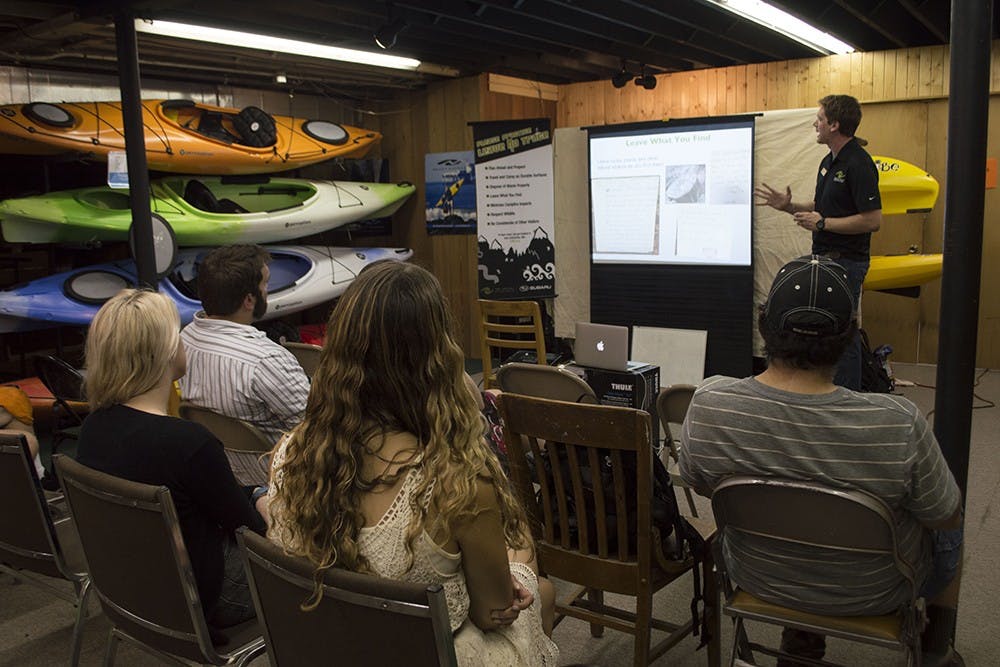That’s just one of the questions the Subaru/Leave No Trace Clinic hopes to answer.
The Subaru/Leave No Trace educators travel the country in their hybrid vehicle to educate people about the seven principles of Leave No Trace, a program designed to help campers and hikers minimize their environmental impact.
The principles include lessons such as “dispose of waste properly” and “travel and camp on durable surfaces,” including reminders to respect wildlife and be considerate to others, according to the Leave No Trace organization’s ?website.
For example, if someone is stuck in a rainstorm, it’s better to be prepared than to improvise a shelter, which can cause damage to the surrounding area.
Two educators visited J.L. Waters, a local outdoor supply store, Thursday night to work with clinic attendees to help them realize that some of their outdoor practices may be harming the wilderness.
Emily Hodapp, the store’s assistant manager, said the idea of the clinic is to help improve the environment.
“The idea is that if everyone in the world followed these ethics then we would have a much better and cleaner world,” she said.
The educators visit areas in particular that have wilderness — like the Charles Deam Wilderness Area near Lake Monroe — that is being damaged by improper human use.
Hodapp said it’s both good and bad that the educators are coming to ?Bloomington.
“It’s also kind of sad because it means we’re not taking care of our land,” she said. “We’re enjoying it, but we’re not enjoying it in the right ways.”
The clinic is also part of the 50th anniversary celebration of the Wilderness Act.
Signed into law in 1964, the Wilderness Act was made to set aside certain areas of wooded land for protection. Wilderness is defined by the National Park Service as “untrammeled” land.
The Deam Wilderness was set aside in the early 1980s and encompasses nearly 13,000 acres of the Hoosier National Forest, according to the National Park Service Website.
Much of the damage seen to the Deam Wilderness is caused by improvised structures including rock chairs and chimneys that visitors build for their camp sites. An assortment of trash and camping gear is left behind, including tarps, buckets and tires.
“What we’re doing is causing a lot of damage to the areas where people are camping out at,” she said.
One of the principles of Leave No Trace includes camping on “durable surfaces,” which includes locations off the trail, but Hodapp cautions that campers should not stay too close to the water.
“You should be 200 feet away from any sort of water source so we’re not contaminating that,” she said. “We’re having human and pet runoff into the water and that’s causing issues for fish and even humans who are using that water to drink.”
Hodapp said she hopes the people attending the clinic become aware of some practices that may be harming the wilderness and change their habits.
“Take only pictures, leave only footprints,” she said.
Anyone interested in learning more can call the store at 812-334-1845.





